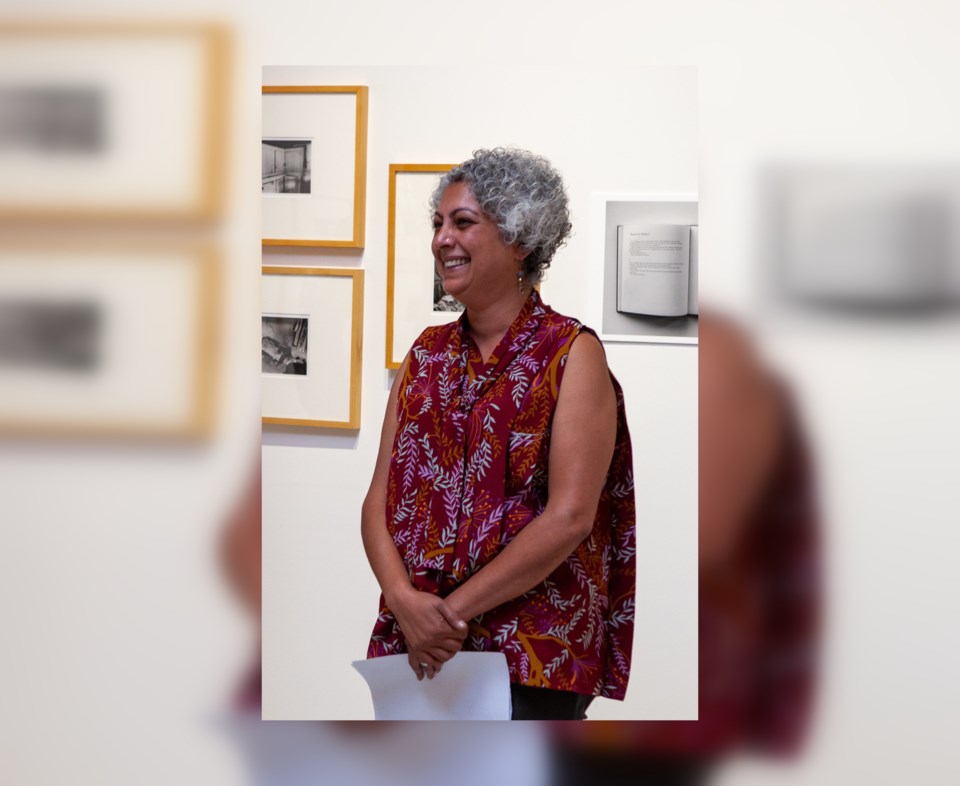An upcoming series of discussions sponsored by the Sunshine Coast Arts Council will probe the process of decolonizing museums and cultural representation.
The first of three scheduled presentations takes place on Oct. 8, and is limited to just over a dozen registrants. Sadira Rodrigues, the curator and director of the Sunshine Coast Arts Council, will lead the inaugural sessions.
“I had been getting a lot of requests for more dialogues around the arts broadly,” said Rodrigues. “More specifically, a lot of people are wanting to get a better understanding of words like colonization and decolonization and how we can equip people to have a better sense of knowing.”
Rodrigues has been a sessional instructor at Emily Carr University of Art + Design since 2001, where she formerly served as its Dean of Continuing Studies. Over the last three decades she has curated exhibitions by local, national and international artists while observing that reconciliation between Indigenous and non-Indigenous peoples is slowly changing perceptions of culture and race.
“We’ll look at how modern constructions of race only began to emerge in the late 1700s under particular conditions,” said Rodrigues. “They emerge at the same time as the emergence of the museum and the university, as we understand them today.”
Participants in the Art Talks sessions will deconstruct a bundle of maps from National Geographic magazine, playfully analyzing and pulling apart a monocultural view of the world.
According to Rodrigues, familiar conventions in the museum world have complex and sometimes troubling roots. The commonplace practice of exhibiting artifacts on white walls stems from the Degenerate Art Exhibition organized by the Nazi Party in 1937 in Munich. White-washed surfaces were an attempt to create a “neutral container” for confiscated artworks.
Insidiously, whiteness acquired cultural cachet. The trend blanked out the fact that historical art was ablaze with colour. Pallid statues from the Roman and Greek eras were originally covered in bright-hued pigments.
“The fact is, even calling out the controversy about acknowledging that classical sculptures were highly painted has garnered a lot of backlash,” said Rodrigues, “because there is value in maintaining the mythology of the white marbles.”
Museums have been framing cultures using colonial and predatory practices for generations, she added. A shift is finally taking place, marked by events like last month’s repatriation of the Ni’isjoohl memorial pole to the Nisga’a Nation village of Ank’idaa. The 11-metre pole had been accessioned without permission by the Royal Museum of Scotland in 1929.
In April, the government of France issued guidelines for returning objects looted from its former colonies. Other institutions are taking action voluntarily, like the Brooklyn Museum, which made headlines by returning over a thousand pre-Columbian artifacts to Costa Rica. The Sunshine Coast Museum and Archives, in its newly-released strategic plan, prioritizes similar collaboration with the Sḵwx̱wú7mesh and shíshálh Nations.
“Restitution and repatriation are a huge part of decolonization,” said Rodrigues. “And now this momentum is accelerating.”
The Art Talks: Colonial Symptoms + Decolonizing Practices series take place at the Sunshine Coast Arts Centre in Sechelt starting Oct. 8. Attendance is limited and pre-registration is required. Browse to sunshinecoastartscouncil.com for details.



